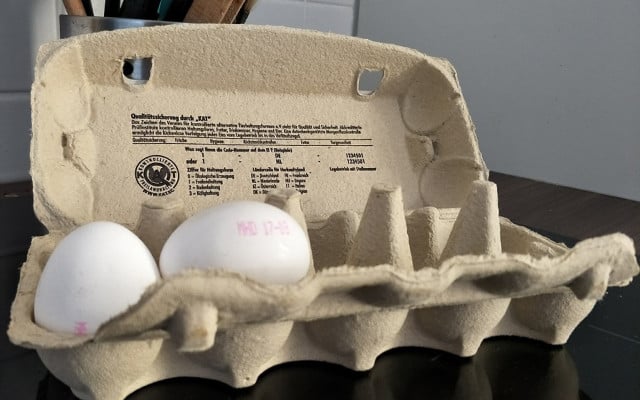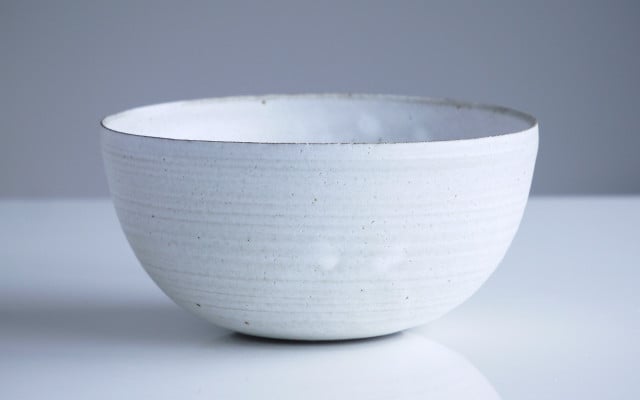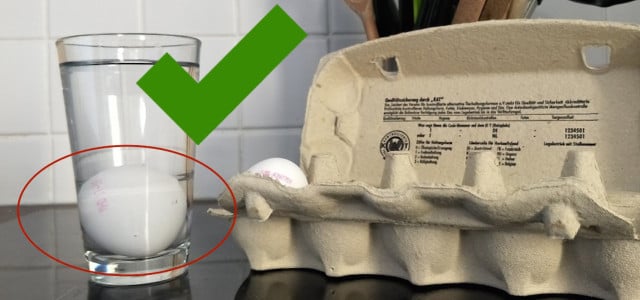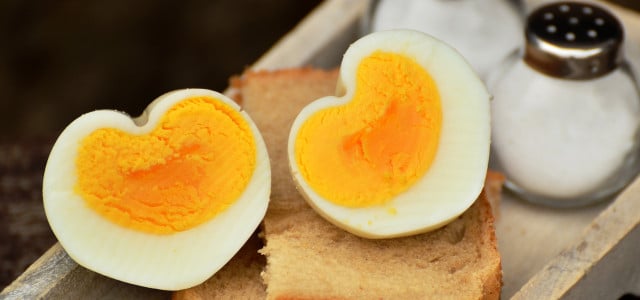There are several reliable ways how to tell if eggs are still good. The renowned egg water test, aka float test, is just one tried-and-true method. In this article, we’ll show you how to perform a simple check before you enjoy those runny yolks.
How To Tell if Eggs Are Still Good

Egg cartons usually have a best-before date on them, or eggs receive a stamp with the best-before date on their shells. This is usually around 28 days from the day they were laid. Even after the best-before date has passed, many eggs are still good and safe to eat.
Unwashed eggs last three weeks, even without a refrigerator. They can then be kept in the refrigerator for another week or two. Here’s how you can tell if your eggs are still good or bad already:
How To Tell if Eggs Are Bad: The Freshness Test
1. The Water aka Float Test



The egg-in-water test is probably the best-known method to test if eggs are still good. Just place the whole raw egg in a bowl of water or a drinking glass.
- If the egg lays on its side at the bottom means it’s still fresh.
- If it’s standing upright on the bottom, it means you should thoroughly cook the egg before eating.
- If the egg floats to the top, it isn’t good anymore and should not be eaten.
You can do the test also with a glass of water. The same applies, if the egg floats to the top, it’s bad. If it stays at the bottom of the glass, it’s good to eat.
Why does the spoiled egg float on top? When a hen lays an egg, water from the egg yolk begins to pass slowly through the shell and evaporate, resulting in an air pocket. If the egg floats to the surface, the air pocket is already taking up a lot of space inside the egg, which is why you shouldn’t eat it anymore.
2. The Egg Yolk Test



The egg yolk can also reveal if the egg is still good. This test won’t work for eggs that will be cooked in their shell. But for all raw egg recipes, you can carefully crack open the egg onto a flat surface. In this case, it’s important that the surface is not sloped in any way.
- If the yolk maintains its shape and the egg white stays close by, the egg is still fresh.
- If the yolk flattens or breaks easily and the egg white spreads across the surface, don’t eat the egg. It’s bad.
A cloudy hue to the egg white is a sign of extra freshness. This “cloudiness” is carbon dioxide, which is present when the egg is laid. Over time, the egg white will become more transparent as the carbon dioxide dissipates. If your egg white is pale and runny like water, don’t eat it.
3. Egg Sound and Light Test
There are two other methods how to tell if eggs are still good. However, due to sometimes inconclusive results, we recommend using these tests in conjunction with the ones mentioned above:
Sound Test
You can also tell if eggs are still good with the sound test: Hold the egg up to your ear (in a relatively quiet place) and gently shake it from side to side.
- If you don’t hear anything, the egg can be eaten.
- If you hear a sloshing sound, you shouldn’t eat the egg.
Older eggs make sounds because the protein is no longer completely firm. It sloshes back and forth inside the egg when you shake it.
Light Test
Often called “candling”, the light test is a centuries-old solution. In an otherwise dark environment, hold the egg up to a strong light.
- If the air pocket is small and the yolk is only slightly discernible, the egg can be eaten.
- If the air pocket is larger or the yolk is very visible against the opaque egg white, you shouldn’t eat the egg.
As mentioned above, fresh eggs have cloudier egg whites and smaller air pockets. Cloudier egg whites conceal the egg yolks more fully when light passes through. Air pockets continue to grow as eggs age. If a hard-boiled egg does not have a full egg-shaped white when peeled, it is stale when cooked.
We hope this guide helps you
Now that you know a few egg tests let’s get cooking!
Read more:
- Vegan Egg Substitute: 6 Ideas for Vegan Egg Replacers
- Foods that Never Expire: 8 Forever Foods for Your Kitchen
- Avocado Benefits: How Healthy is this Trending Superfood?
- Dyeing Easter Eggs: Here’s How to Make Your Own Organic Dyes
Do you like this post?







